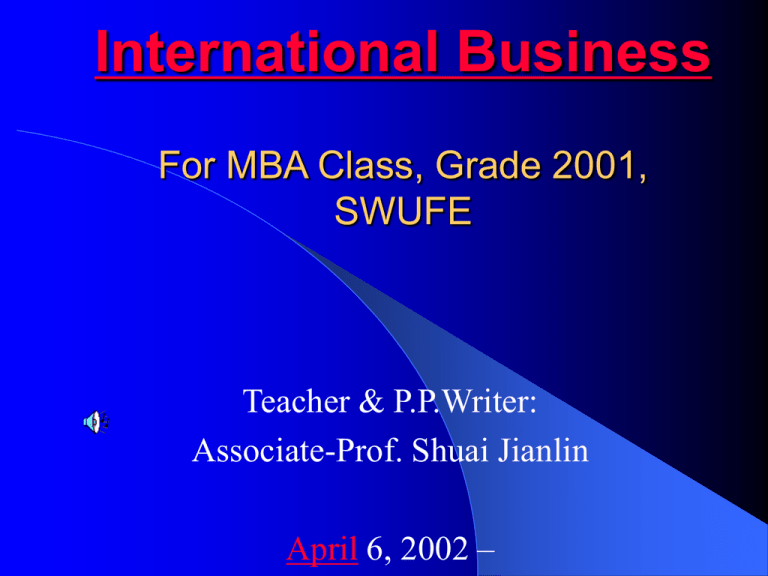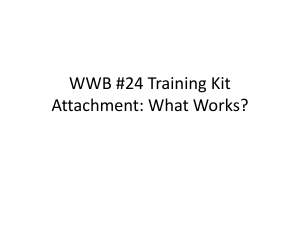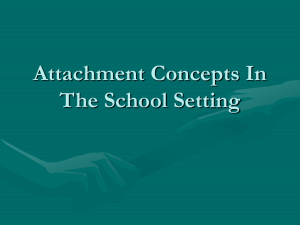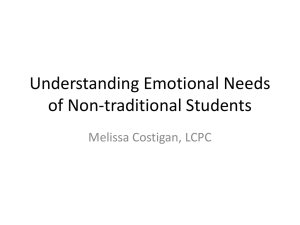International Trade Practice
advertisement

International Business For MBA Class, Grade 2001, SWUFE Teacher & P.P.Writer: Associate-Prof. Shuai Jianlin April 6, 2002 – International Business Part 1: Environment for International Business Part 2: Decision Making Part 3: Aspects and Practice of International Business Part 1 Environment for International Business Chapter 1 Economical Description of the World (Economic Map) Chapter 8 More about Globalization Chapter 2 Economic & Cultural Foundation of the Western Market Economy Chapter 3 Theory & Policy for International Business (Trade & Investment) Teacher’s Words To Think Globally, to Act Locally. 1.1 Chapter 1 Economical Description of the World Bird-eye View, or Tiger-eye View ? 1.1.1 Bird-eye View, – World Economy – Globalization (Oxford Analytica & Case ) – Regional Integration Free Trade Area Customs Union Common Market Economic Union Complete Economic Integration 1.1.2 Tiger-eye View ? – Regulatory Framework International Law WTO (& Official Sayings, Packages) IMF The World Bank ADB ICC FIDIC Case US Meets the Challenge of Globalization Refer to “the Written Papers” for Language Test Keys to the Test 1.2 Chapter 2 Economic & Cultural Foundation of the Western Market Economy 1.2.1 Environment of Political & Economic System of West Market Economy 1.2.2 Cultural Backdrop 1.2.3 A Few Useful Economic Analytical Tools 1.2.1 Environment of Political & Economic System of West Market Economy What business are we to do? Property Rights Government Ownership & Planning Special Role of Money, Banking System & the Central Bank Foreign Trade & Investment Attachment 1 to 1.2.1 The expanding horizon of the typical Chinese enterprise: – International Purchasing; – International Finance; – International Technology Transfer; – International Production Partnerships; – International Marketing Attachment 2 to 1.2.1 Attributes of the Market Economy (cf. Centralized Planned Economy) – Well Defined & Well-protected Property Rights for Individual; – A Varying but Relatively Low Proportion of Government Ownership Enterprises; – A Special Role for Money as A Means of Payment & a Standard of Deferred Payment; – Foreign Trade & Investment Follow the Comparative Advantage of a Country; Balance of Payment Necessary for the Acceptance of its Currency Convertibility; Attachment 3 to 1.2.1 Attributes of the Centralized Planned Economy: – Refer to the Book in Chinese 1.2.2 Cultural Backdrop Culture Shock Understanding Cultural Differences Customs Etiquette & Protocol Non-verbal Communication Cultural Landmines for Women Religions & The Impacts on Business Cross-cultural Marketing Attachment 1 to 1.2.2 Customs Etiquette & Protocol Attachment 2 to 1.2.2 Non-verbal Communication – Gestures around the world Attachment 3 to 1.2.2 Cultural Landmines for Women Attachment 4 to 1.2.2 Religions & the Impacts on International Business – Bible & Christianity ---what does the Root tell us? – Alcoran (Gulan) & Islamism Case: Platonic (唯心)& Realism(实在论)-- Premier Li Peng’s visit with 5 million to President Assad with a cold face //Barkley Hydro-power Project & Government Loan—My money is mine; yours is also mine. Case: Key Role of the VIP – “Beifang”, Liu Laosan & Assad//SCMEC & Mr.Wali//Zhongxing Co. Case: So many uncertainties– changing contract, promise; Visa application at Jordan Embassy at Damascus, etc. Case: Pious & Brave fighter for Muhanmurd---telling a lie? – Buddhism In Singapore, Vietnam, Laos, Nepal, etc. Attachment 5 to 1.2.2 Cross-cultural Marketing 1.2.3 A Few Economic Analytical Tools Opportunity Costs Marginal Analysis Economic Incentive Opportunity Cost in Roma Empire (Roma Empire’s PPF) X: Cars (Millions per year); Y: Grain (Billion of bushels per year) A: Opportunity Cost of 1 car is 2000 bushels of grain. B: opportunity cost of 1 car is 9000 bushels of grain. 1.3 Chapter 3 Theory & Policy for International Business (Trade & Investment) 1.3.1 International Trade Theory 1.3.2 Foreign Direct Investment (FDI) 1.3.3 Government Influence on Trade and Investment 1.3.4 China’s Comparative Advantage (for selfstudy) 1.3.5 Implications---to trade, or to invest? That’s a question. 1.3.1 International Trade Theory Comparative Advantage Theory Survey of International Trade Benefits of International Trade Barrier to International Trade & Causes to FDI (Government Influence) Case Study Attachment to 1.3.1 Benefits of International Trade Flow of Goods Balance of Trade and Balance of Payments Attachment to 1.3.1 Barrier to International Trade & Causes to FDI Culture Barrier Economic Barrier Artificial Barrier 1.3.2 Foreign Direct Investment / International Direct Investment What’s that? FDI . The Relationship of Trade & Factor Mobility Motivations for Handling International Business through Direct Investment Market-Expansion: Investments vs. Trade Resource-Acquisition Investments Diversification-Oriented Investments Competitive Risk Minimization Political Motives Buy vs. Build Decision 1.3.21 What’s that? FDI. The Core of FDI: Control 控制--FDI的核心 The Concern about Control 对于控制的观 点 Methods of Acquisition 收购的途径 1.3.22 The Relationship of Trade and Factor Mobility 贸易与要素流动的关系 The Trade and Factor Mobility Theory贸易 理论与要素流动理论 Substitution 替代 Complementarities of Trade and Direct Investment 贸易与直接投资的互补行 1.3.23 Motivations for Handling International Business through Direct Investment 通过直接投资进行国际 商务的动机 To Expand Their Sales 扩大销售 To Acquire Resources 获取资源 To Diversify Their Sources of Sales & Supplies 销售或供给的多样化 To Minimize Competitive Risk 竞争风险的最小 化 To Attain Political Advantage 获取政治优势 1.3.24 Market-Expansion: Investments vs. Trade Attachment to 1.3.24 Trade Barrier Causes Flow of Capital; Capital Flow Barrier Causes Trade Transportation Lack of Domestic Capacity Scale Economy Trade Restriction Country-of-Origin Effects Nationalism Product Image Delivery Risk Changes in Comparative Costs 1.3.25 Resource-Acquisition Investments 为了获取资源的投资 Vertical Integration 垂直一体化 Rationalized Production 合理化生产 Access to Production Factors 获取生产要素 The Product Life Cycle Theory 产品生产周 期理论 Government Investment Incentives 政府对投 资的刺激 1.3.26 Diversification-Oriented Investments 以多元化为导向的投资 Diversification Cyclical Swings 1.3.27 Competitive Risk Minimization 竞争风险最小化 Following Customers 追随顾客 Preventing Competitor’s Advantage 阻止竞争 者的优势 1.3.28 Political Motives 1.3.29 Buy vs. Build Decision 购买—创建决策 Reasons for Buying Reasons for Building







